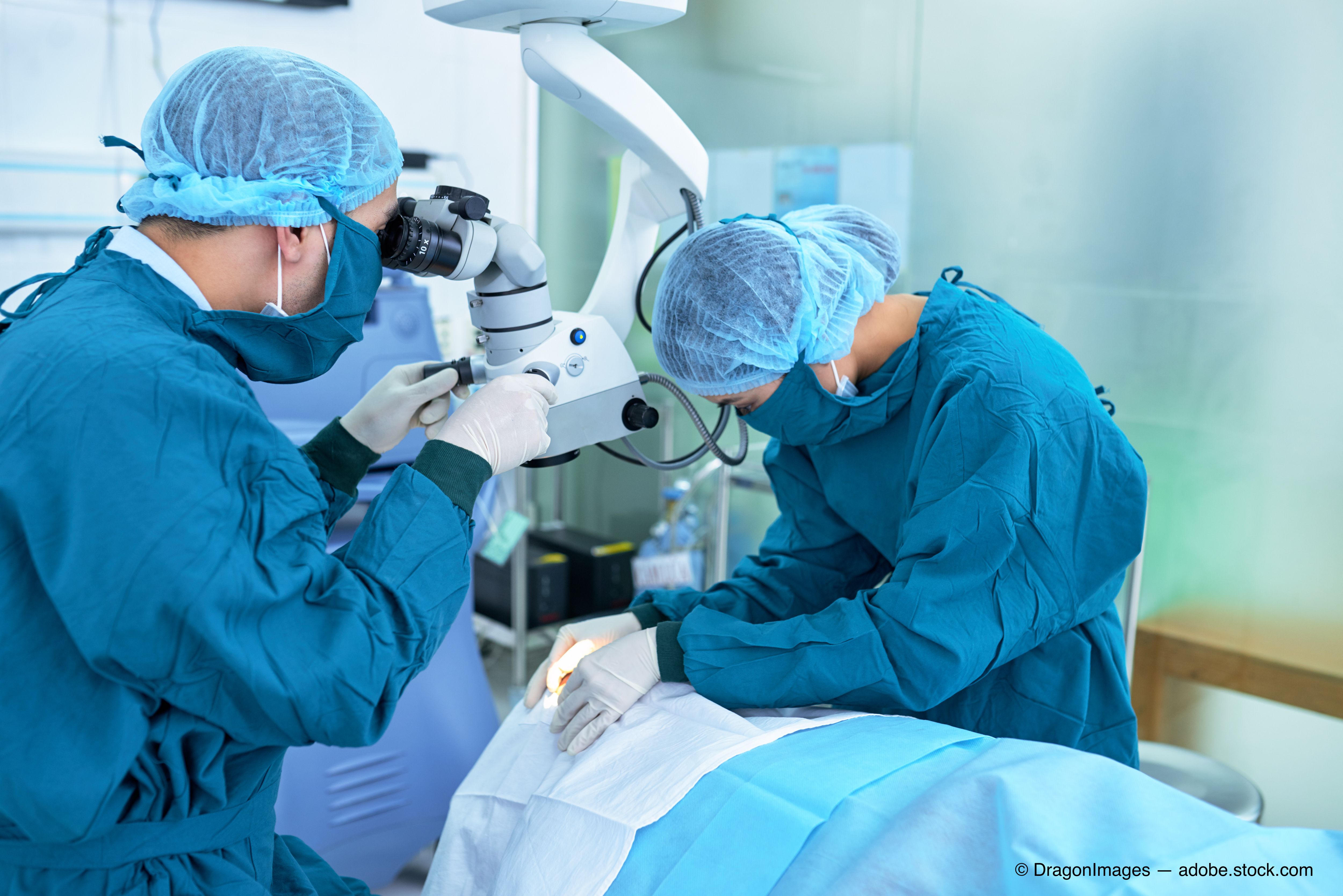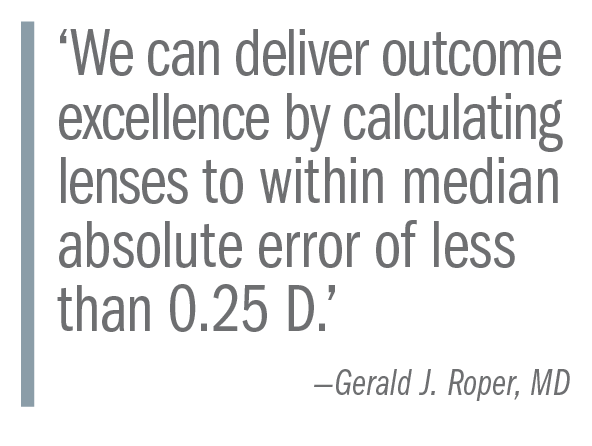Article
Protecting cataract patients and their surgeons' practices
Author(s):
Maximizing refractive surgery is key to ensuring prosperous future

Special to Ophthalmology Times®
As cataract surgeons, we can address our unfavorable medical climate by returning to this basic care tenet: provide the very best care we can offer to patients.
If I were offered cataract surgery and had significant astigmatism, I would only accept an offer to have my astigmatism corrected. I know many cataract surgeons would respond similarly.
Related: Personalizing cataract surgery
In the interest of patient function and satisfaction, we have refined astigmatism correction in many patients’ eyeglasses year after year, while we have also had the opportunity to improve those patients’ function by implanting a toric IOL, and providing simultaneous refractive bioptics.
The time to act is now.
The same approach can be applied to presbyopia. Our patients deserve to understand this very high-value proposition.
These predicaments conjure up many questions. Is our own anxiety about delivering outcomes the real reason advanced technology IOLs (AT-IOLs) are implanted at such an inadequate rate?
If we see the value in them, why is that not related to patients?
Do we allow an unfavorable medical system and environment to influence our decision about providing the best for our patients?
Regardless of the reasons, we can and must do better. Here is how we preserve our own integrity and the integrity of our field.
Related: Surgeon brings cataract care to underserved patients in the Caribbean
Patients understand
Patients can understand the value and the limitations of our latest and greatest vision technologies. Spoken plainly, patients generally understand that human bodies are asymmetric and heal variably.
Pointing out to them that each of their single corneas are also asymmetric and that their eyes, although a pair, are different from each other can help elucidate, for example, that even if one measured estimate of the power of a lens implant in one patient’s eye is the same as it would be for another patient’s eye, with the same measured dimensions, those 2 different people with 2 different eyes may not heal in exactly the same manner and could have different focus outcomes.
This means the same thing to patients as it does to us; distance refractive outcomes are neither perfect nor guaranteed.
Patients can then accept that improvement in brightness, contrast, stereopsis, and range represents valuable functional improvement, which would also help them to accept imperfect, yet excellent visual outcomes.
Related: Dropless regimen after cataract surgery relieves patient treatment burden

Outcome excellence
We can deliver outcome excellence by calculating lenses to within median absolute error of less than 0.25 D.
Current optical coherence tomography (OCT) biometry (IOLMaster 700, Carl Zeiss Meditec; Lenstar LS 900, Haag-Streit), performed on a controlled ocular surface, especially when applied in redundant tandem and processed through review and planning software (Holladay IOL Consultant Software and Surgical Outcomes Assessment; Holladay Consulting) with the Barrett Universal II formula, is essential to my practice.
Additionally, intraoperative capsulorrhexis and incision control through microscopic computer guidance systems are readily available and beneficial.
Implementing a microscopic computer guidance system (Zeiss CALLISTO Eye, Carl Zeiss Meditec) in 2014, along with swept-source OCT biometry and interferometry, has improved my refractive outcomes.
This is in addition to IOL formula improvements before and since then, bringing more than 90% of my patients to within 0.50 D refractive targeting.
Related: Improving outcomes of cataract surgery
Limit complications
Diligence in limiting intraoperative complications in cataract surgery is essential to the long-term ocular health of our patients and our ability to give them maximal refractive correction.
All cataract surgeons and partnering industry deserve credit for the rapid development and continuation of significant cataract safety advances.
The spectrum of improvements has been vast, from advances in extraction systems’ pumps and energy delivery, to chamber and iris management, incision and rhexis control, IOL insertion and placement, chopping techniques, and other surgeon-specific skills.
By incorporating a lens fragmentation device (miLOOP, Carl Zeiss Meditec) and technique in 2018 I was able to perform safer surgery and, surprisingly, further improve refractive outcomes.
Related: Keys to manual small-incision cataract surgery techniques
In a recent outcomes series in my own practice, patients realized refractive outcomes within 0.25 D of target more than 90% of the time and within 0.50 D in more than 98% of eyes.
The fragmentation device uses centripetal energy, which appears to reduce stress on zonules, resulting in more predictable refractive outcomes. Like all surgical devices, it requires the development of surgical acumen, after which surgeons and patients can realize tangible benefits in reduction of morbidity and improvement in function.
Conclusion
We are up to this challenge. We can surgically improve functional vision quality and range and even improve the comorbidities of other chronic ocular conditions.
Patients will choose these high-value offerings. Our practices’ health and our satisfaction and integrity will improve as our patients’ ocular function and long-term health improves.
The best, overall long-term outcome is achievable by applying the right technologies during the pre-evaluation phase for testing and planning as well as by using the right technology in the operating room.
These efforts reduce complications and stress on the natural tissues and leave patients in their most normal physiologic state.
Read more cataract surgery content here
About the author
Gerald J. Roper, MD
e: ropercare@mac.com
Dr Roper has been in private practice for more than 20 years at Roper Advanced Eye Care in Batesville, Indiana. He has also participated in cataract medical education through the American Academy of Ophthalmology and the American Society of Cataract and Refractive Surgery for more than 20 years and, in cooperation with industry, is a consultant for Carl Zeiss Surgical.





